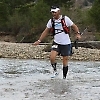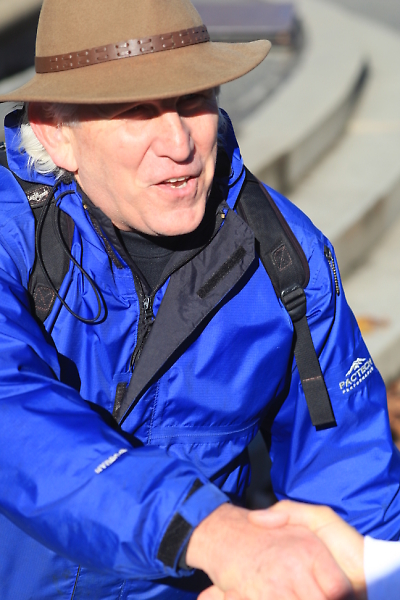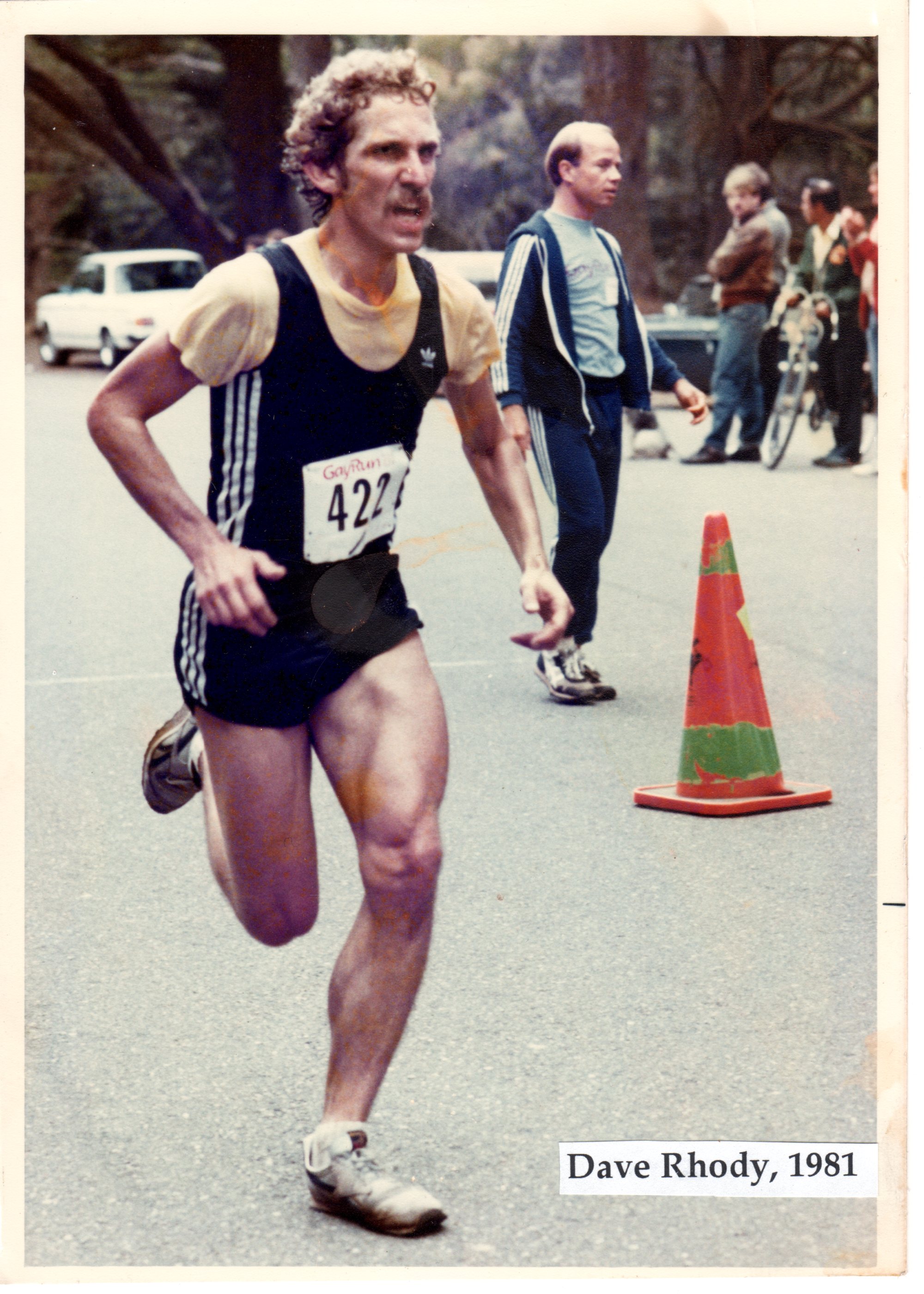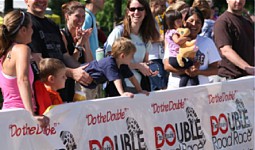UjENA FIT Club Running Interviews and articles with 100 Interesting People
Best Road Races and the UjENA FIT Club is speaking with 100 people who we feel have a lot to say about running, racing and fitness We will give you background information as will as their insights into the future. Be sure to post your feedback and comments.
Read All UjENA FIT Club Running Interviews
Posted Thursday, February 19th, 2015
by Bob Anderson, publisher of Double Runner magazine (Photo Bob Anderson with world record holder Julius Koskei wearing the yellow... Read Interview
Posted Monday, March 17th, 2014
The Chris Jones story is a running saga of epic proportions. Don't try this at home! (Photo - Leadville 100... Read Interview
Posted Sunday, March 23rd, 2014
Aging ever so gracefully at age 59 and forging a career record that becomes ever more impressive, Sharon Vos is... Read Interview
Posted Tuesday, November 5th, 2013
By David Prokop Editor Best Road RacesJulius Koskei (pronounced Kos-kay), who set the current world record in the Double Road... Read Interview
Dave Rhody Interview No. 20
Tuesday, February 21st, 2012
Getting to know the guy who has produced over 400 events over the last 28 years
Dave Rhody races are well known and are well organized and produced. He was an avid runner logging in 80 to 100 miles a week including running to and from work. In 1983 Dave was taking a break from a nine-year stint as a social worker, and decided to wanted to run from Newport Beach to San Francisco a distance of 630 miles in 19 days. He was waiting tables at Houlihan's Restaurant on Fisherman's Wharf and along the way he stopped at various Houlihan's Restaurants on his route. This led to Dave deciding to produce his first race in 1984, the Houlihan's to Houlihan's race. Dave had a natural instinct for event production and his first event was a success with nearly 2000 runners and San Francisco 49er quarterback, Joe Montana was there giving out the awards. After a few more successful races, Kathy Henning joined Dave as a partner both in business and in life. Over the last 28 years RhodyCo Productions have produced over 400 races with more than 1.5 million participants. I only meet Dave officially just a few years ago. I had sold Runner's World before he started producing events. I have been running his races since the early 90's and witnessed a hard working focused guy making it all happen. At the recent Kaiser SF Half Marathon (Feb 5), Dave took the time to say hi and wish me luck. I told him I was hoping to run 1:30 and that's what I did. Like always, it was a well organized and executed event. We selected this half marathon as one of the Best Road Races in North America. Thanks Dave for giving us events we want to run. (Interviewed by Bob Anderson)
2. Did you ever think you would be the guy putting on major races? 3. As a runner, what moments stand out in my mind?
Photo: Dave at the 1984 Houlihan's race. 4. You had nearly 2000 runners in your first race. How did you pull it off? 5. What makes a good race? 6. What is the biggest race you have produced? 7. Are there too many races these days? 8. What do you think about offering prize money?
9. How about appearance money? 10. If the Boston Marathon were one on your events, how would it be different? 11. Have you ever put on a race that had fewer than 100 runners? 12. Rain or shine...when would you call off an event? 13. I can remember running a couple of your events when it was pouring down rain. That must be tough to make it all work. 14. You have taken some heat from time to time. Does it bother you? The press can be vicious. 15. What has happened with your own running these last 27 years? 16. Have you ever ran a race you produced? Comments and Feedback
 Sometimes runners including myself take it for granted that the race we are running is going to be measured and timed correctly. Plus we want everything else that is going to make our experience a good one. It is what we expect these days. Your races are enjoyable to run and I look forward to the next one. Thanks for telling us about the man who makes it all happen... Sometimes runners including myself take it for granted that the race we are running is going to be measured and timed correctly. Plus we want everything else that is going to make our experience a good one. It is what we expect these days. Your races are enjoyable to run and I look forward to the next one. Thanks for telling us about the man who makes it all happen...Bob Anderson 2/21/12 3:33 pm |
,,,,, | Photo: Dave out front detailing out the last minute logistics before the start of the Kaiser SF Half Marathon Feb 5. Photo by Catherine Cross Ujena Fit Club 17. How many weekends out of the year are tied up with your events? 18. It seems like some of your races have a fair amount of bandits. Is this a major issue and how do you think it should be handled? 19. How important is chip timing? Seems like there has been some issues. 20. Your entry fees are reasonable compared to others. NY marathon is now $255. What is your take on the high entry fees these days? 21. How important are sponsors? 22. Most if not all of your races do not have expos? Why have you not gone down this road? 23. Some of your races like Run Wild For The Child is much smaller than in the past, does this concern you? 24. How has your events helped get new people involved in running? 25. How important is it to you that your races are won in fast times? 26. Why do you think the average times in races is getting slower? 27. Many races have more women than men. Where are the men? Are they running but just not racing? Or is there more women running than men these days? 28. When did you realize you could make a living by putting on events? Photo: Announcing the runners as they cross the finish line at the 2011 Run Wild for a Child. Photo by Catherine Cross Ujena Fit Club 29. It seems you have done very well in this business. And you are still the guy right there making it happen and giving out awards at many if your races. You must love it? 30. What are the key positions in putting on a race? Are you more of a producer or director? Is there a different between the owner of the event and the producer?
32. What is a typical day like for you these days? 33. You use outside timing companies to time most of your races? How come you don't do this in house? 34. What other interests do you have? 35. How did you meet Kathy? 36. What is her role at RhodyCo? 37. How closely do you follow the running world? 38. Do you ever feel this business got in the way of your own personal running? Any regrets? 39. Anything new coming? 40. At the end of the day, has it all been worth it? |

Copyright 2025 UjENA Swimwear · Site Map · Feedback · Tell A Friend · Nominate a Race
Leaderboard · UjENA 5K · Double Road Race · UjENA Jam · UjENA Network














 1. You were a runner before you put on your first race in 1984?
1. You were a runner before you put on your first race in 1984? 
 31. I see you have written a novel Dakota White.
31. I see you have written a novel Dakota White. 
